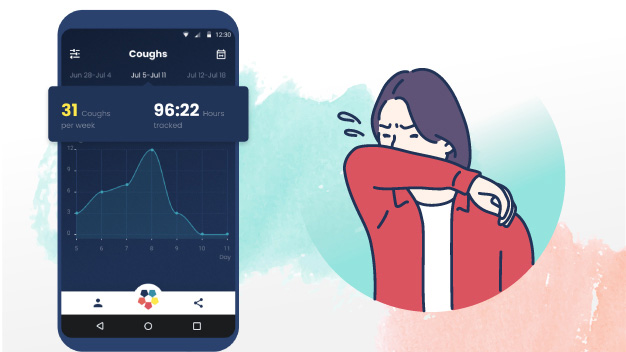At the pandemic’s start, the list of symptoms associated with the coronavirus was relatively short and specific. One symptom long on the list was a barking cough. But how could potentially infected individuals differentiate this from another type of cough? People with limited knowledge on the topic likely couldn’t.
But technology has a way of catching up to us, delivering answers with a touch of a button. In the world of analyzing coughs, Hyfe is a growing contender.
Technology powered by artificial intelligence and delivered through an app, Hyfe allows users to monitor their coughing habits. All they need is a smartphone.
Joe Brew, Hyfe’s co-founder and CEO, told MobileSyrup Hyfe currently has 180 million recordings and “is as good as a human ear.” Coughs heard within earshot are picked up and examined by AI for their cough pattern. A change in pattern indicates whether or not there’s a need to be checked out by a medical professional.
He says Hyfe is becoming the “Shazam for coughs.” Hyfe can identify coughs just as quickly as Shazam identifies music, TV shows, and movies, just from a small sample of relevant sound.
What does this mean for patients?
Brew said “meaningful conversations” about coughs aren’t happening at doctors’ offices. In most cases, it’s because patients reduce a “complex set of sounds to a single word [like] wet, dry, or hacking,” making it harder for doctors to understand the respiratory needs of their patients.
“By enabling the detection of coughs in real-time, conveniently, cheaply and at any scale, our models allow patients to track their cough and cough dynamics, equip providers to use cough as a clinical finding, and researchers to use cough as an endpoint in trials.”
Brew said one of the things they’re currently exploring is acoustic epidemiology: using sounds to study disease. They’re currently partaking in studies that can predict outbreaks in real-time by tracking changes in cough patterns across communities. Doing so will help define a baseline of regular cough and help track any deviations in real-time, potentially helping prevent future pandemics.
He does admit it will take longer to normalize how coughs are analyzed and create risk models. But this would be very helpful in eliminating the high costs of diagnostics, which is often a barrier to healthcare. Treatment costs will also lower when risks are identified earlier, and outcomes will improve.
“For this to happen, we need to further our own understanding of the signal in the cough and generate reliable clinical validation data. This is what keeps us and our scientific collaborators busy and excited: building models that identify and predict disease risk and having these models validated to the satisfaction of the most rigorous regulators out there.”
Privacy and the future of the app
Hyfe is mindful of personal data, Brew said.
“We use a two-step approach that first detects short (0.5 seconds) peak sounds. Other sounds are immediately deleted. We then determine whether those peak sounds are coughs or not using our powerful machine learning model.”
Despite the growing number of users in the app, the project does have its obstacles. “As pioneers of acoustic epidemiology, we are trying to define a whole new category, and that is never easy.”
Brew said they’re starting with the fundamentals — including publishing peer-reviewed articles and running clinical trials– and focusing on machine-learning problems. The information then has to be packaged to solve problems and is accepted by patients, providers, and regulators.
Hyfe is available on iOS and Android.
Image credit: Hyfe

Source link



